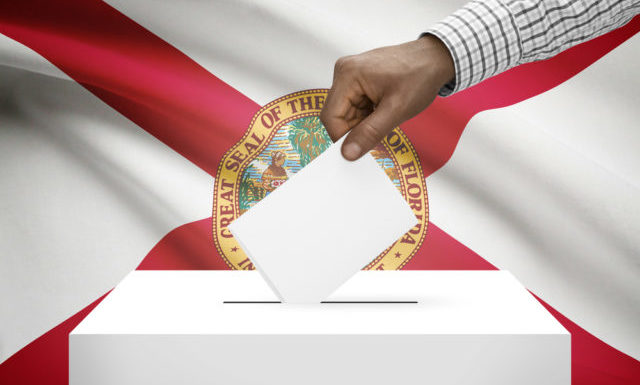Democrats’ Dream Of Turning Florida Blue Is Fading To Red

There has been a considerable amount of gleeful, even hopeful, reporting nationally that Florida is about to become a blue state, shedding the status of the largest swing state and sliding into the blue column.
A few events were pointed to hungrily as evidence for this inevitability: the wave of Puerto Ricans moving to Florida after the devastation of Hurricane Maria was going to balloon the Democrat voter count by hundreds of thousands as they are American citizens and can vote; Amendment 4, the felon voting amendment passed by voters that automatically reinstates voting rights for those who served their time would also adds thousands to Democrats because everyone knows criminals vote for Democrats in much higher percentages; and of course President Trump’s unpopularity was tainting the GOP brand far into the future.
Well not so fast. It appears that, like clockwork, the media mistook their fondest hopes for actual reality.
The 2019 voter data is in, and it doesn’t look good for the Democrats or their media. More than 663,000 voters have registered since the 2018 midterms, and they broke evenly between Republicans and Democrats. That includes the felons and the Puerto Ricans. But, when you factor in voters who switched parties or who are no longer active on the rolls, Republicans actually gained a modest 22,000 voters on Democrats. In a state with such tight statewide elections regularly, it matters.
This actually continues a trend. After the 2014 midterms, Republicans gained 129,000 voters on the Democrats. And after the 2010 midterms, they gained 74,000 voters.
This is all the more significant in that Republicans vote in higher percentages than Democrats. This is why Florida is a swing state in presidential elections, but has a majority of Republicans in Congress and the state Legislature — despite the fact that about 37 percent of voters are registered as Democrats, while 35 percent as Republicans.
Republicans have been closing the gap for many years now. As the Jacksonville Times-Union reports: “Democrats’ voter registration advantage over Republicans is slimmer than it was in 2018 or 2016, when Republicans won the state, and it’s significantly slimmer than in 2012 and 2008.”
The only wild card in this data pool is that No-Party Affiliation candidates in Florida continue to grow the fastest, outpacing both Republicans and Democrats.
But again, because of voter turnout — highest among GOP voters — the trend is positive for 2020 and beyond at this point.
So while Democrats and the media dream of creating another giant blue state to go with California and New York, it looks more like Florida may be becoming a red state, or red-purple.
EDITORS NOTE: This Revolutionary Act column is republished with permission. © All rights reserved.


not to mention that our fantastic president is now a Florida Citizen….I think that might have some impact over the Summer. I’m thinking that indictments might be coming out over the Summer, and we will see what happens to voter rolls then….buckle up your seatbelts everyone…it’s going to be a wild ride!
Back in 2012, Florida voters put in anti-gerrymandering Amendments in the State Constitution. This isn’t easy, and the measures were approved with 62-63% of the vote (60%min is required). Democrats supported it, because they claimed Republicans were acting in their favor, Republicans charged Democrats the same, and independents voted overwhelmingly for it. Result: we have compact, contiguous districts, and the Legislature went even more in favor of the Republicans. Perhaps Republican policies are better liked?